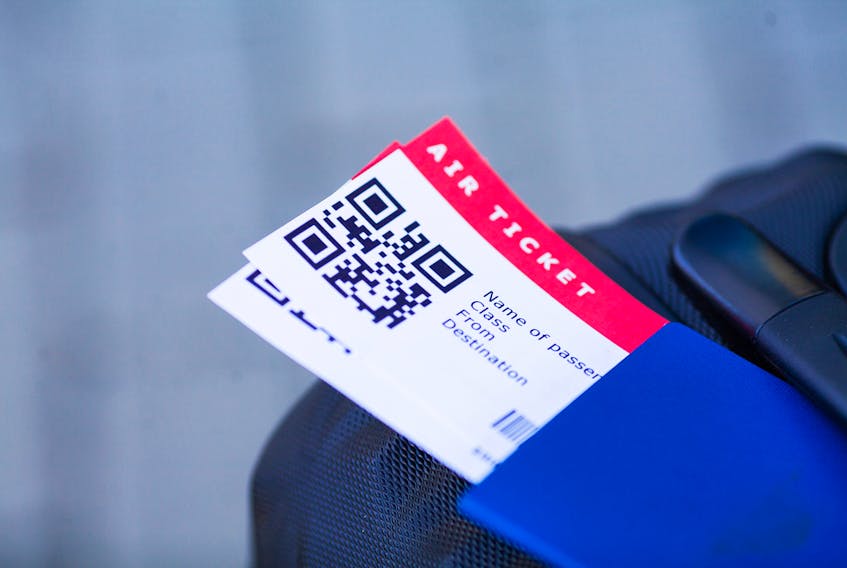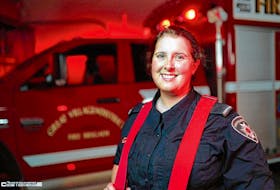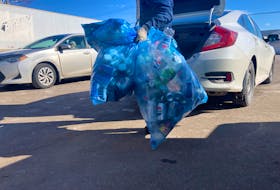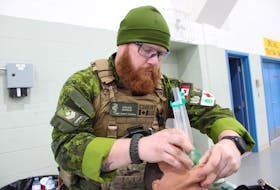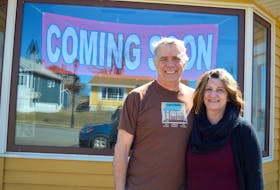In October, the St. John’s International Airport Authority (SJIAA) typically wraps up work on its budget for the next fiscal year. But 2020 is unlike any other, with the COVID-19 global pandemic decimating air travel.
“This year, we’ll go right into December, just because things are continuing to evolve,” SJIAA CEO Peter Avery told The Telegram Monday. “I think what’s really different this year, based on the uncertainty of where revenues come from, is having to take a zero-based budgeting approach.”
Under these circumstances, the airport authority is starting from scratch with its budget, scrutinizing every expense to assess whether it’s unavoidable or perhaps expendable.
Just about every airport around the world is facing a similar situation. SJIAA projects a total loss of 80 per cent of passenger traffic for 2020 year-over-year, and Halifax International Airport Authority (HIAA) has experienced a 90 per cent decline since the beginning of the pandemic.
Both airport authorities recently announced plans to increase their Airport Improvement Fees beginning in 2021.

Passengers departing from SJIAA will see that fee rise 20 per cent from $35 to $42. Travellers leaving Nova Scotia from Halifax will pay $35 instead of $28 starting Jan. 1, 2021, an increase of 25 per cent. Passengers travelling within the province to J.A. Douglas McCurdy Sydney Airport will see the fee increase from $15 to $22.
The combination of a decrease in passenger traffic and overall air service reduction has SJIAA projecting a 65 per cent loss in revenue for 2020.
“As a user-pay system, that’s how we generate revenue, having passengers come through our doors,” Avery said. Given traffic is down so much, the Airport Improvement Fee needed to be raised to help pay debt-servicing obligations linked to past infrastructure upgrades.
“Like us, a lot of airports are waiting to see if there’s some funding coming from the federal government, but even that in and of itself wouldn’t be enough,” Avery said. “The Airport Improvement Fee increase that we have right now is just seen as one piece of the puzzle. It won’t solve all of our debt problems and all of our borrowing, but it’s something that’s necessary to at least assist.”

Stabilizing effect
Paul Brigley, vice president of finance and chief financial officer for HIAA, said the goal for 2021 is to make incremental changes to help stabilize what remains to be a very uncertain situation. The Airport Improvement Fee increase is not a decision they’re taking lightly, but it’s necessary given the strains placed on servicing debt and dealing with capital projects that cannot be swept aside.
“We really are left with looking to increase that fee just to help stabilize our projected revenue stream,” he said. “It won’t fully meet our investment requirements, but we’re hoping in the future it will get back to more of an equilibrium.

“This is not something that we take lightly, increasing the fees,” he later added. “Increasing the financial burden on travellers is not necessarily going to help encourage more travel. Unfortunately, airports across the country are in considerable financial distress, and we have to pull the levers that we have under our control. We have to look at our fee structures carefully. Whether it be a fee like the Airport Improvement Fee that’s charged directly to passengers or any of the fees that are charged to air carriers.”
SJIAA and HIAA have already trimmed operational expenses considerably in 2020 by closing off some areas and cutting discretionary spending. SJIAA is using climate control features to reduce air conditioning and heating costs and focusing its cleaning activities on high-traffic, high-touch areas. SJIAA laid off 15 per cent of staff earlier this year and HIAA has cut 25 per cent of its workforce.
Brigley noted air travel demand is out of HIAA’s control and will not be back until passengers feel safe. Similarly, it has no control over air travel restrictions.
“What we do have control over, to a certain extent, are our expenditure levels,” he said. “They’re getting very close scrutiny. They have all through this year, and that will continue for the foreseeable future.”
“I think you’ll see as we move forward even more cost-cutting measures,” Avery said, noting about 90 per cent of SJIAA’s operational costs are fixed ones. As an example, he suggested snow clearing will focus on essential surfaces, with some parking lots and roadways likely closed off from the public.
“That’s certainly not a project that I would see restarting any time soon, until we see traffic levels go back to where they were,” Avery said.
SJIAA and HIAA are both focusing capital spending on the essentials — safety, regulatory and security projects. Brigley said HIAA will also continue with projects that are near completion.
"(Expansion of the arrivals area is) certainly not a project that I would see restarting any time soon, until we see traffic levels go back to where they were.” — Peter Avery, St. John's Airport Authority
“Certainly, any expansionary-type products have been suspended for the time being,” he said, noting too there have been investments to address public health and safety issues specific to the pandemic.

As for that conceivable time when passenger traffic returns to pre-COVID levels, it is hard to pinpoint. Right now, SJIAA suggests that may not happen until 2024.
“We’re constantly talking with all our sister airports across the country and also in North America,” Avery said. “Everybody is involved in doing these projections for the industry worldwide as a whole and domestically and looking at all the sectors and relevant experts ... It’s ever changing. Like other airports, our forecasts have continued to deteriorate through the year. We all had hoped we’d be into recovery by now in the fall.”
@CBNAndrew

